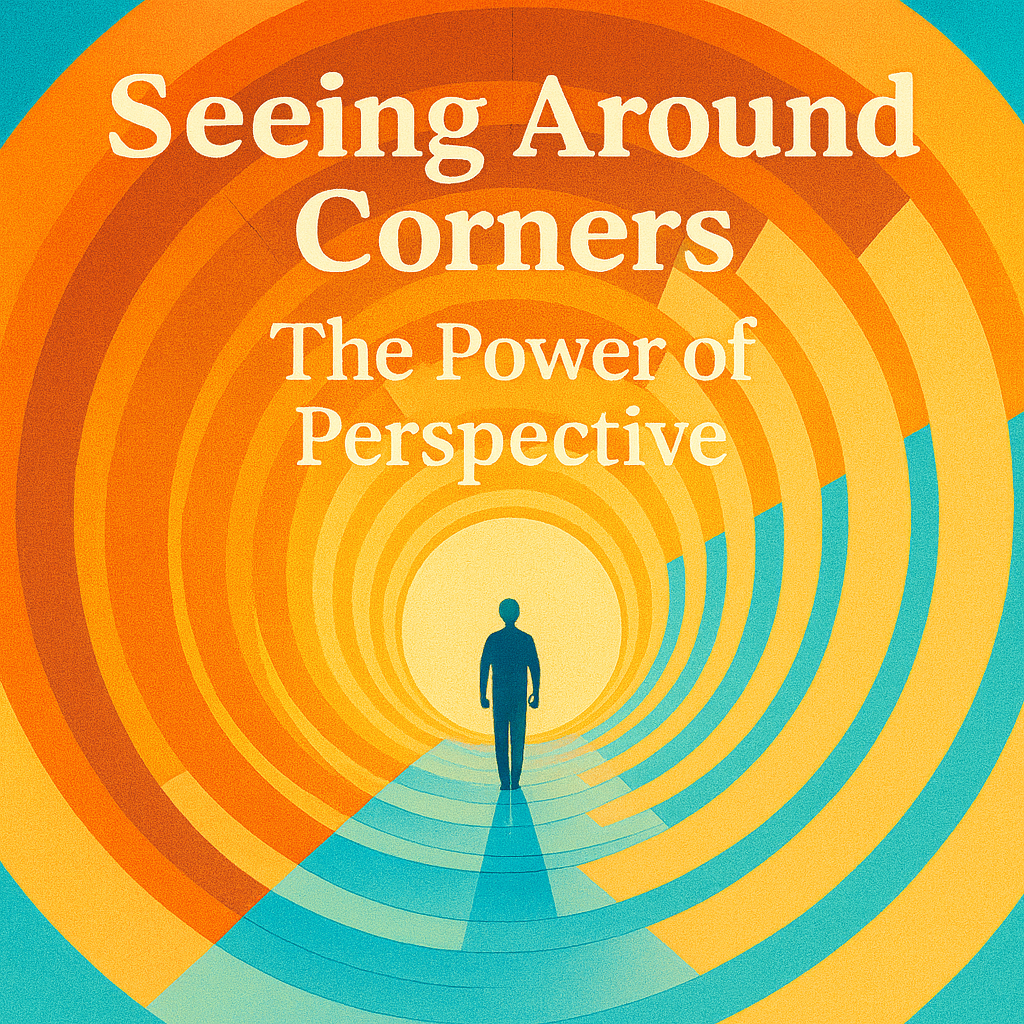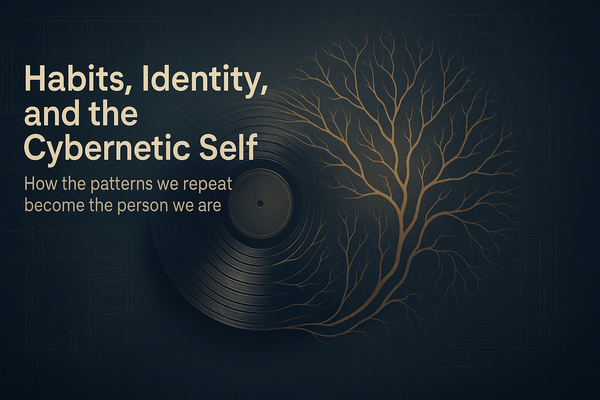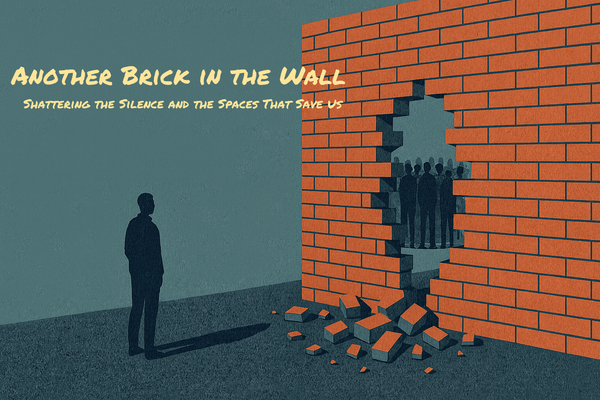Seeing Around Corners: The Power of Perspective
The smallest change in perspective can transform entire outcomes. Someone once said, 'If you don't have leverage, create it.' That's the ultimate perspective shift; refusing to accept apparent limitations and instead asking what you're missing.

"It is the obvious which is so difficult to see most of the time. People say 'It's as plain as the nose on your face.' But how much of the nose on your face can you see, unless someone holds a mirror up to you?" — Isaac Asimov
The Box Question
Here's a simple question that reveals everything about how we think: How many sides does a box have?
If you're like most people, you immediately answered six. And you'd be right, from a certain perspective. But you'd also be missing half the story.
A box doesn't have six sides. It has twelve. Six on the outside, and six on the inside.
This isn't a trick question or clever wordplay. It's a fundamental truth about how we see the world. We automatically default to the obvious, the external, the surface level. We count what we can immediately see and call it complete. But there's always another dimension, another angle, another set of surfaces we're missing entirely.
When Circles Become Tubes
Consider a circle drawn on paper. Most people see a flat, two-dimensional shape with clear limitations. It can't hold anything, can't transport anything, has no volume or capacity. But shift your perspective just slightly, and that same circle becomes a tube. Suddenly it has dimension, capacity, functionality. It can contain, transport, connect. The information didn't change, but everything about its potential transformed.
This is the power of perspective: the same reality revealing completely different possibilities depending on how you choose to see it.
The Hidden Dimension Problem
Why do we naturally see only the obvious? Because our brains are efficiency machines, designed to make quick decisions and move on. We've been conditioned to accept the first reasonable answer and stop looking. It's faster, easier, and usually "good enough."
But here's what we miss: the mental discipline required to look deeper often reveals the most valuable insights. Every breakthrough, every innovation, every competitive advantage comes from someone who refused to accept the obvious answer and kept looking.
Think about the elephant rope. When elephants are young and small, trainers tie a rope around their leg and attach it to a tree. The young elephant pulls and struggles but can't break free. Eventually, it stops trying. Years later, when that elephant weighs several tons and could easily snap the rope, it doesn't even attempt to escape. A thin rope holds a massive, powerful creature simply because it learned to see that rope as an unbreakable constraint.
How many ropes are holding you that exist only in your mind?
The Power of Tiny Shifts
Here's what's remarkable: the smallest change in perspective can transform entire outcomes. Someone once said, "If you don't have leverage, create it." That's the ultimate perspective shift: refusing to accept apparent limitations and instead asking what you're missing.
This tiny mental pivot changes everything. Instead of seeing constraints as final, you see them as starting points for creativity. Instead of accepting "no leverage," you ask, "How do I create leverage where none seems to exist?"
Most people see problems and ask, "What's the problem?" The perspective shift asks, "Why does this problem exist?" Moving from symptoms to systems, from effects to causes, from what to why. This single question opens up entirely different solution spaces that remain invisible to surface-level thinking.
Two Paths to Better Vision
Why Most People Get Stuck
We get trapped by automatic thinking patterns and social conditioning that rewards quick answers over deep insight. We're comfortable with obvious solutions because they feel safe and require less mental energy. The surface level is where most people live, and there's a certain security in staying with the crowd.
But this comfort comes at a cost. When everyone is looking at the same six sides, nobody sees the other six. When everyone accepts the rope as unbreakable, nobody tests its actual strength.
Developing the Skill to See More
The ability to shift perspective isn't magic. It's a learnable skill. It starts with training yourself to ask different questions:
- "What am I not seeing?"
- "What would this look like from the other side?"
- "What assumptions am I making that might not be true?"
- "If this constraint didn't exist, what would be possible?"
It means looking for the inside surfaces when everyone else stops at the outside. It means testing the rope when everyone else accepts it as permanent. It means asking why the problem exists instead of just trying to fix what's visible.
Lessons from the Masters
The greatest thinkers and strategists have always understood this principle, though they've expressed it in different ways.
Eliyahu Goldratt showed us in "The Goal" that tiny bottlenecks control entire systems. Most people see a slow process and try to speed up everything. Goldratt taught us to find the single constraint that's actually limiting the whole system. Same factory, completely different perspective on where to focus effort.
Scott Mager in "You Are the Best" revealed how we miss our own hidden strengths by focusing only on obvious talents. The perspective shift is looking inward with the same curiosity we bring to external problems, discovering potential that others overlook because we've learned to see it ourselves.
Joshua Medcalf in "Chop Wood Carry Water" taught the profound lesson of finding greatness in mundane tasks. While everyone wants the big accomplishments, mastery comes from loving the process that builds the foundation. It's seeing the inside value of daily work that others dismiss as unimportant. Who you become through chopping wood matters more than the wood itself.
In "Pound the Stone," Medcalf shared the stonecutter's wisdom: "When nothing seems to help, I go and look at a stonecutter hammering away at his rock perhaps a hundred times without as much as a crack showing in it. Yet at the hundred and first blow it will split in two, and I know it was not that blow that did it, but all that had gone before." Each seemingly ineffective swing builds hidden momentum. The perspective shift is seeing accumulation where others see futility.
The Why Behind the Why
In negotiation, most people get stuck arguing positions. "I want this." "Well, I want that." But there's always a deeper layer. Why do you want that? And why is that important? This "why behind the why" approach, drawn from "Getting to Yes" strategies, reveals the real drivers underneath surface demands.
When you understand that the person demanding the orange needs the peel for baking while you need the juice for drinking, you've shifted from competition to collaboration. Same orange, different perspective on what's actually valuable.
This deeper inquiry often uncovers surprising common ground and creative solutions that remain invisible when you stay at the surface level of stated positions.
Seeing Around Corners in Practice
Some people naturally develop the ability to anticipate what others don't see, to connect dots between seemingly unrelated things. This isn't mystical. It's the result of consistently asking why problems exist rather than just accepting what problems appear to be.
When Southwest Airlines saw "no assigned seats" as faster boarding instead of customer chaos, they weren't just solving a problem differently. They were seeing the problem differently. When Netflix saw late fees as customer friction to eliminate rather than revenue to protect, they weren't just innovating. They were operating from a completely different perspective on what mattered.
This is how competitive advantages are born. Not from working harder on the same problems everyone else sees, but from seeing different problems entirely.
Your Next Box
Here's the truth: there are boxes all around you right now with sides you haven't counted. There are circles in your life that could become tubes with a simple shift in perspective. There are ropes holding you that might snap with the lightest testing.
The question isn't whether these hidden dimensions exist. They always do. The question is whether you'll develop the discipline to look for them.
Start with one simple practice: when you encounter any limitation, any problem, any "impossible" situation, pause and ask, "Why does this exist?" Then ask why again. And again. Keep drilling down until you find the assumptions that created the apparent constraint.
Sometimes you'll discover the rope was never as strong as it seemed. Sometimes you'll find leverage where none appeared to exist. Sometimes you'll realize you've been counting only half the sides.
The Inside View
We began with a box and the realization that what seems complete is often only half the story. We end with the understanding that perspective isn't just about seeing differently. It's about fundamentally changing what becomes possible.
The box still has twelve sides whether you count them or not. The circle still has the potential to become a tube whether you see it or not. The rope still might be weaker than you think whether you test it or not.
But until you shift your perspective, those possibilities remain in the realm of the invisible. The outside surfaces will always be obvious. It's the inside surfaces that hold the secrets.
The transformative power isn't in the looking. It's in the shift itself. That moment when the circle becomes a tube, when the constraint becomes a creative prompt, when the problem becomes a doorway to a solution you couldn't see before.
Your next breakthrough is waiting on the other side of a perspective shift. The only question is: which box will you look at differently today?




